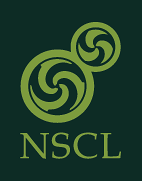Nuclear clustering with pinholes and probes
Quantum mechanics can be described in terms of particle-like or wave-like behavior. This famous duality also extends to numerical simulations of quantum mechanics using random number sampling in a general technique called quantum Monte Carlo. In one version of quantum Monte Carlo, the simulations sample all possible random paths of interacting particles. In another version of quantum Monte Carlo, the simulations work with wave functions. In this case the interactions are produced in an indirect manner by sampling random fluctuations in space and time. This approach, known as auxiliary-field quantum Monte Carlo, can lead to efficient simulations, however information about the positions of particles relative to the center of mass is lost.
In the recent paper “Ab initio calculations of the isotopic dependence of nuclear clustering,” which appeared in Phys. Rev. Lett. 119, 222505 (2017), the authors solved this problem by inserting an opaque sheet into the simulation that lets particles through only at certain pinhole locations. The locations of the pinholes are then sampled to determine the distribution of particle positions. The authors studied the formation of alpha-particle clusters (or 4He nuclei) as substructures within larger nuclei by measuring the probability of four particles clumping together into a small region of space. They also mapped out the geometrical arrangement of the clusters. By using these probes, they concluded that alpha-particle clustering becomes less prominent in neutron-rich nuclei due to the quantum entanglement of particles in neighboring clusters.

Figure: An opaque sheet allowing particles to pass only at chosen pinhole locations. The pinhole locations are sampled to give the particle distribution.



